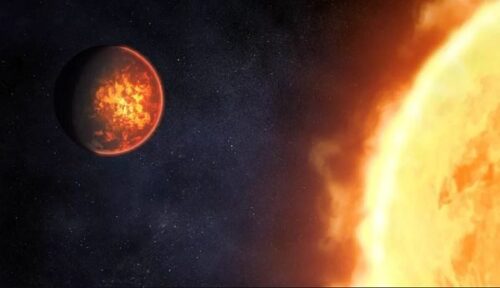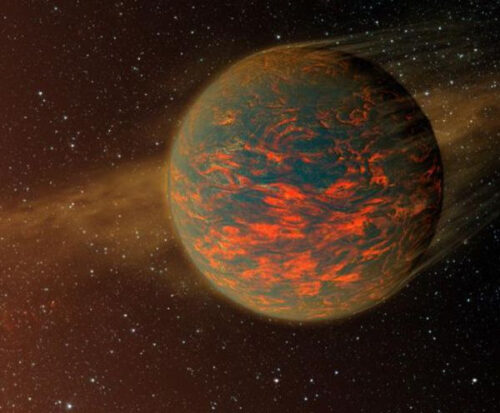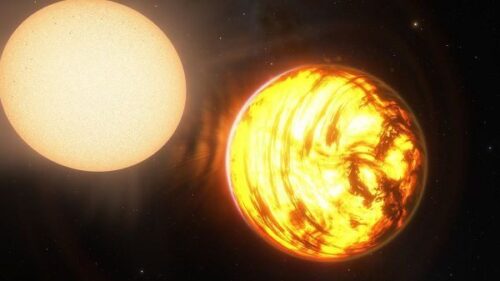
In a monumental leap towards unraveling the mysteries of the cosmos, NASA’s highly anticipated James Webb Space Telescope, aptly nicknamed “Hunter,” is poised to embark on a groundbreaking mission to study two enigmatic rocky planets believed to be reminiscent of our own early Earth.
These celestial bodies, known as “super-Earths,” have been christened 55 Cancri e and LHS 3844 b. While 55 Cancri e is a scorching planet engulfed in molten lava, LHS 3844 b presents a stark contrast by lacking a protective atmosphere.
Nestled at a distance of 2.4 million kilometers from its parent star, 55 Cancri e is a testament to extreme conditions. To put this in perspective, it orbits a mere 4% of the relative distance between Venus and the Sun.
The surface of this planet boasts temperatures that surpass the melting point of most types of rocks, with one side perpetually exposed to the blistering heat of its nearby star. Intriguingly, previous observations from the Spitzer Space Telescope have unveiled the presence of slightly cooler regions within this fiery world’s hottest zone.
The James Webb Space Telescope, armed with its advanced array of scientific instruments, will revolutionize our understanding of exoplanets and the cosmos as a whole.
Equipped with cutting-edge technology and an unprecedented level of sensitivity, this extraordinary telescope will allow scientists to peer deeper into the universe than ever before, shedding light on the formation and evolution of planetary systems.

By scrutinizing these two super-Earths, 55 Cancri e and LHS 3844 b, the James Webb Telescope aims to uncover invaluable insights into the early stages of Earth’s development.
As potential replicas of our own planet during its infancy, these celestial neighbors hold tremendous scientific significance. The information gleaned from their study may provide vital clues about the origins of life and the conditions necessary for habitability.
With its distinctive lava-covered surface, 55 Cancri e represents an inhospitable realm where intense heat dominates. Its extreme temperatures and molten landscape make it a captivating subject of study. By analyzing the composition and characteristics of its atmosphere, if present, scientists hope to gain a deeper understanding of how such conditions shape a planet’s evolution and habitability potential.
On the other hand, LHS 3844 b presents an intriguing enigma due to its lack of an atmosphere. By investigating this barren planet, scientists can examine the effects of atmospheric erosion and uncover the mechanisms that lead to the dissipation of atmospheres over time.
This information will contribute to our understanding of how atmospheres develop and the factors that determine whether a planet can maintain a stable atmosphere conducive to supporting life.
The James Webb Space Telescope’s extraordinary capabilities will enable researchers to perform detailed spectroscopic analyses, examining the composition of these rocky worlds and deciphering the chemical fingerprints imprinted within their atmospheres.

By scrutinizing the light passing through these planetary atmospheres, scientists can detect the presence of key molecules and elements that are indicative of habitability or geological activity.
In addition to studying the two super-Earths, the James Webb Telescope will explore a vast array of celestial phenomena, ranging from the birth of stars to the formation of galaxies.
This revolutionary observatory will capture breathtaking images and invaluable data, pushing the boundaries of human knowledge and opening up new frontiers of discovery.
As the James Webb Space Telescope embarks on its mission to study 55 Cancri e and LHS 3844 b, anticipation mounts within the scientific community and the general public alike. The insights gained from these two enigmatic worlds will undoubtedly reshape our understanding of the universe and our place within it. Armed with unprecedented capabilities

